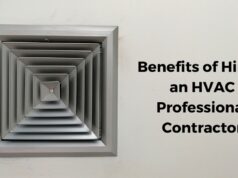
In the world of accounting, one word is very important – depreciation. Even though many people think this is something only people who run some businesses are dealing with, it is not true. This term is very important for all people who want to know the worth of their assets. Simply said, depreciation We can say it is based on different accounting methods and does not cause an outflow of cash. Its purpose is to gradually transfer the value of assets to costs.
To better understand the term itself, we will add that it simultaneously expresses the depreciation of assets, and also expresses another possibility, which is to compensate for the spent part of assets through its various effects, which include sales of products and services. The economic benefits to the company are now clear. This is an accounting job, and to make sure that it will be done exactly as it should be, the choice of an accountant or an accounting firm is very important. See more about that at capitalclaims.com.au.
To better understand the term itself, we will start with the basics, and these are the types of depreciation that can be applied to assets. The main division is into long-term tangible and intangible. What makes them the easiest to distinguish is the basis of the calculation, ie the cost of acquiring a certain type. Acquisition cost represents the value of certain assets on which depreciation is calculated, since the value of assets decreases over their useful lives, so it is necessary to monitor the impact of reducing their value on the company’s results of operations.
There are also various depreciation methods, namely the straight-line, functional, and degressive methods.

The linear method is considered the simplest because the costs are even and the base and rates remain unchanged over the projected lifetime. In each accounting period (annual, semi-annual, quarterly, or monthly) costs are charged to equal depreciation amounts.
The next is degressive, ie the method in which the property is initially spent more, ie has a higher production. What we can conclude from this method is that reducing the depreciation rate reduces its amount.
Last but not least is a functional method which is not called this for no reason. The next is degressive, ie the method in which the property is initially spent more, ie has a higher production. What we can conclude from this method is that reducing the depreciation rate reduces its amount. In this method, depreciation is calculated according to the effect, so it is important to predict the most realistic effect. The effect of this method is to write off most of the cost of the asset in the first half of the useful life of the asset. The choice of method depends on the entrepreneur or the person who wants to depreciate his property.
Whichever method is used, it is necessary to test it at the end of the year to still be sure that it is the most appropriate. It is important to recognize the best method for your asset and that is something the accountant will do for you.
Long-term tangible assets with a large number of entrepreneurs in various industries very often make up a significant portion of the value of total assets. Therefore, the accounting procedure with fixed assets is of special importance. Long-term tangible assets are from property without which it is almost impossible to perform any activity. This type of property includes construction facilities, machinery and equipment, means of transport, and so on. Intangible assets include patents, licenses, software, and so on. Land, forests, and paintings are not subject to depreciation due to the fact that they usually have a limited lifespan (land).

There is also one more important expression – depreciation calculation. When it comes to its meaning, it has a double one. In one way it can imply the reduction in the value of assets and the possibility of compensating for the spent part of assets through effects such as sales of products and services and thus aging financial benefits. It starts billing when the asset is ready for use, that is when the conditions necessary for the property to be used are met.
Costs have common characteristics, despite numerous definitions. Costs are measures, in monetary terms, the sums of resources that have been used for a purpose, specifically in production. For a successful business, it is important to record costs at the time they are incurred, not when they are followed by expenditure. All incurred expenses are recorded in the business books on the basis of proper and credible accounting documents. The calculation is a calculation procedure that determines the price of products and services, and especially prices costs, purchase, and sale prices. It is compiled for each type of product, for each cost center whose calculation aims to find out whether the spent elements of the work process are covered in full or not. It is important that you consider hiring an accountant, ie someone who will do the job professionally, a useful and smart investment.

There is also one more important expression – depreciation calculation. When it comes to its meaning, it has a double one. In one way it can imply the reduction in the value of assets and the possibility of compensating for the spent part of assets through effects such as sales of products and services and thus aging financial benefits. It starts billing when the asset is ready for use, that is when the conditions necessary for the property to be used are met.
It can be concluded that the choice of depreciation method has an impact on the company’s operating result in a given year. This primarily applies to different amounts of asset value at the end of the year concerning the depreciation method used.
In addition to reducing bad impact, planning business in the future depreciation can become part of the planned business and its impact it should not be a negative factor for the business of the company, but it should be a positive, integral part of every company’s business cycle.









